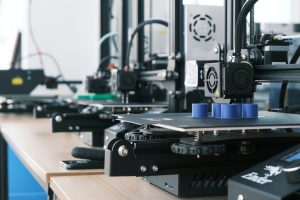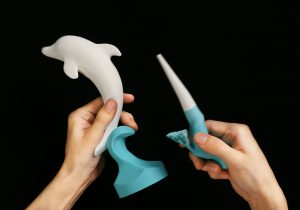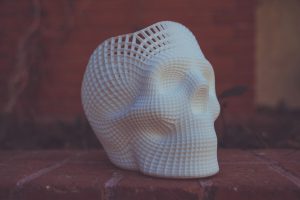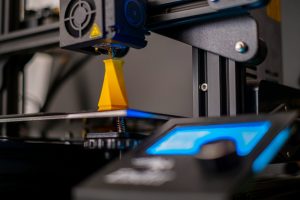Across the world, 3D printing, also called additive manufacturing, has grown from a niche experiment into a serious industrial tool. Today, it’s used to produce medical implants, custom automotive parts, architectural prototypes, and even entire houses.
In Africa, the technology is still in the early stages of adoption, but momentum is building. Nigeria, with its large population, growing tech ecosystem, and increasing number of makerspaces, has the potential to become one of the continent’s leaders in this space. While the country is not yet a 3D printing powerhouse, its combination of demand, entrepreneurial spirit, and emerging local suppliers suggests a promising decade ahead.
Nigeria’s Current 3D Printing Landscape
The exact market size for 3D printing in Nigeria is not formally documented, but estimates place it between ₦12–15 billion ($8–10 million USD) in 2024. That’s small compared to global markets, yet the growth potential is significant. The global industry is expanding at over 20% annually, and with rising interest in manufacturing independence, Nigeria could match or even outpace that rate.
Drivers shaping local adoption include:
- Falling Equipment Costs: Desktop printers and entry-level industrial machines are becoming more affordable.
- Local Filament Manufacturing: Nigerian companies like PlaSpool are producing high-quality PLA filament domestically, reducing reliance on costly imports.
- Skills Development: Universities, technical institutes, and STEM-focused NGOs are integrating 3D printing into their training programs.
- Import Substitution Needs: With a heavy reliance on imported parts, local production offers cost savings and shorter lead times.
However, challenges remain, such as limited awareness outside specialist circles, unstable electricity supply, and high import duties on advanced printers. Overcoming these barriers will be essential for unlocking the full potential.
Current Landscape: Adoption and Awareness
- A survey revealed that over 90% of Nigerian participants in academia and industry had heard of 3D printing; however, only 38% understood it at a basic level, and just 12% could operate a fused-deposition modeling printer The Conversation.
- In education, projects like the “Light Up the Dream” initiative equipped multiple public schools across eastern and western Nigeria with 3D printers and hands-on training, introducing the technology to subjects beyond STEM, including English and Geography Vanguard NewsThe Guardian Nigeria.
- Grassroots initiatives such as 3D Printing Naija have raised awareness, especially in secondary schools and universities, though overall familiarity remains low: only 10% of the population were estimated to be aware of how 3D printing works Protolabs Network.
These insights underscore both the growing interest in Nigeria and the educational gap that still needs closing.
Five Key Sectors with Real Opportunity
Healthcare
- Local startups like Anadach Group and 3D Makery are producing custom prosthetics, orthotic devices, and anatomical models, making medical solutions more accessible and tailored naijatrends.ng.
- Although specific local cost comparisons are not yet published, global examples highlight 3D-printed prosthetics at a fraction of traditional costs. (For example, a Guardian report notes 3D-printed children’s hands can cost around £40, while conventional options cost thousands in developed countries) The Guardian.
Education
- Nigeria’s education sector is embracing 3D printing, with numerous schools benefiting from donations of printers and filament and training provided to teachers, boosting beginner-level STEM engagement Vanguard NewsTHISDAYLIVE.
- Academic studies argue that limited deployment, awareness, and curriculum integration remain major challenges despite the clear potential of 3D printing to support practical learning The ConversationResearchGatepunchng.com.
Manufacturing & Prototyping
- In 2017, Nigerian Foundries Limited, one of Africa’s largest, purchased West Africa’s largest 3D printer for rapid pattern making, showing early industrial use The Conversation.
- Though still rare, local enterprises like Elephab have begun using 3D printing for automobile replacement parts, demonstrating industrial-scale prototyping use ﹙and potential for import substitution﹚ punchng.com.
Construction
- Adoption faces hurdles due to high-equipment costs, large-scale 3D printers can cost between $100,000–$1 million, with import duties up to 35%, raising entry barriers significantly ﹙for example, hardware worth $500,000 becomes much costlier with duties﹚ punchng.com.
- Skilled operators are scarce, and educational programs rarely train individuals in construction-specific AM technologies punchng.comThe Conversation.
Consumer & Creative Goods
- The potential for locally produced, culturally inspired goods is emerging. Local innovation hubs and tech entrepreneurs are beginning to test the waters, though formal market data is still limited.
- Support programs such as 3D Africa for Girls aim to build human-centered design skills among youth, particularly young women, setting the foundation for future consumer creativity Wikipedia.
Sector Insights
| Sector | Evidence of Activity | Key Opportunity |
|---|---|---|
| Healthcare | Startups producing prosthetics and models | Affordable, localized medical solutions |
| Education | School programs introducing 3D printing | Enhancing STEM learning and digital skills |
| Manufacturing | Foundries and SMEs applying AM for parts | Import substitution and rapid prototyping |
| Construction | High cost and limited skills | Long-term potential if infrastructure improves |
| Creative Goods | Early design innovation & female-focused programs | Culturally-infused custom manufacturing |
Nigeria’s 3D printing ecosystem may still be nascent, but the existing sparks, from startups to educational NGOs demonstrate genuine potential across multiple sectors. Grounded progress is plausible in healthcare, prototyping, education, and creative production, while construction remains a longer-term frontier due to high costs and infrastructure needs.
To capture this potential effectively, priorities include expanding training initiatives, integrating the technology into educational curricula, providing financial incentives for adoption, and showcasing successful local use cases.
With strategic investment and broader awareness, Nigeria’s 3D printing future could move from potential to practical, one layer at a time.






